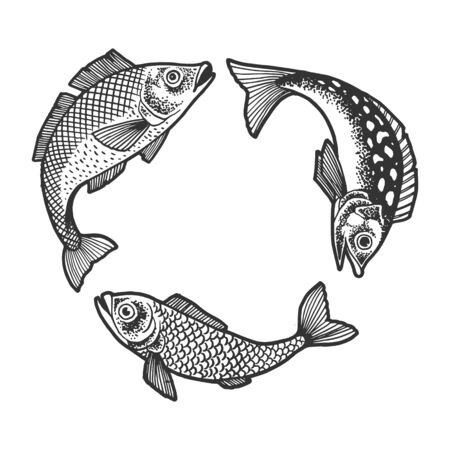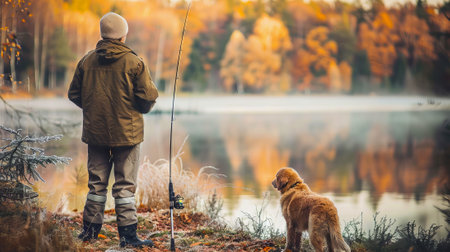1. Understanding British Stillwaters
When it comes to trout fly fishing in the UK, British stillwaters offer a uniquely charming experience that is deeply rooted in local angling culture. From sprawling, man-made reservoirs nestled in rolling countryside to serene, gin-clear chalk lakes fed by natural springs, each venue brings its own set of challenges and delights. These waters are often meticulously managed, creating ideal habitats for both stocked and wild trout, making them prime destinations for anglers seeking both sport and relaxation. To truly excel in casting distance and accuracy, it’s vital to first understand the lay of the land—literally. Take time to stroll the banks before setting up: observe wind patterns ruffling the surface, look for subtle rises or swirls that betray cruising fish, and pay close attention to areas where aquatic vegetation transitions into open water. In classic British style, patience is key; allow yourself a quiet moment with a flask of tea as you watch for movement or feeding activity. Chalk lakes may require stealth and delicate presentations due to their clarity, while larger reservoirs might call for longer casts to reach feeding lanes or drop-offs. By reading these subtle signs and tuning into the rhythm of each unique stillwater, you’ll be well on your way to mastering the cast—setting the stage for rewarding days on quintessential British fisheries.
Essential Fly Casting Equipment
When it comes to mastering casting techniques for distance and accuracy in British stillwater trout fly fishing, having the right equipment is paramount. Anglers in the UK blend time-honoured tradition with innovative advancements, ensuring their tackle is fit for the diverse conditions of British lakes and reservoirs. Let’s take a closer look at the essentials every stillwater enthusiast should consider.
Traditional vs Modern British Fly Rods
British fly rods have a storied legacy, with split-cane models once dominating bankside conversations. Today, while some purists still favour these classic rods for their character and feel, most anglers opt for modern carbon fibre rods, prized for their lightweight strength and enhanced casting performance. Typically, a 9’6” to 10’ rod rated for #6 or #7 lines offers the ideal balance for distance casting and precise control on breezy stillwaters.
Comparison of Rod Types
| Rod Type | Main Material | Typical Length | Best For |
|---|---|---|---|
| Traditional Split-Cane | Bamboo | 8–9 | Nostalgic Angling & Short Casts |
| Modern Carbon Fibre | Graphite/Carbon Fibre | 96″–10 | Distance & Accuracy on Large Waters |
| Hybrid Glass Fibre | Fibreglass | 86″–96″ | Soft Presentation & Small Stillwaters |
The Heart of the Setup: Reels and Balanced Lines
A quality reel may not directly influence your casting range, but it ensures smooth line retrieval and reliable drag when big trout make a dash. Look for large-arbour reels capable of holding ample backing—crucial when fish take long runs across open water.
Your fly line choice, however, is pivotal. A weight-forward floating line remains the staple for most British stillwater scenarios, providing enough mass towards the front for effortless distance while retaining delicacy. Intermediate and sinking lines are also popular, particularly in deeper venues where trout patrol beneath the surface film.
Recommended Gear Checklist for Stillwater Success
| Item | Description/Recommendation | UK Brands to Consider |
|---|---|---|
| Fly Rod (9’6”–10’, #6/7) | Medium-fast action for versatility in wind and varying distances. | Hardy, Greys, Shakespeare |
| Large-Arbour Reel | Smooth drag system and space for floating/intermediate lines plus backing. | Hardy, Orvis (UK models), Leeda |
| Weight-Forward Floating Line (#6/7) | Mainstay line type; consider intermediate/sinking as supplements. | Cortland, Airflo, Snowbee |
| Tapered Leader (9’–12’) | Smooth turnover for accurate presentation. | Sci Anglers, Rio, Fulling Mill |
The British Touch: Must-Have Accessories
No kit would be complete without a few homegrown touches—think traditional wooden landing nets slung at your side, an old-school tweed cap to keep the sun at bay, and a sturdy pair of wellies or waders ready for that chilly British morning mist. Investing in balanced gear not only improves your casting prowess but also elevates your entire stillwater experience—from first cast to final catch.

3. Classic Casting Techniques for Distance
When it comes to British stillwater trout fly fishing, mastering classic casting techniques is essential for both reaching distant rises and achieving pinpoint accuracy. Among the most celebrated distance casting methods in the UK are the overhead cast and the double haul—two techniques that have become synonymous with British fly fishing tradition.
The Overhead Cast: A Timeless British Favourite
The overhead cast is often the foundation of any fly angler’s repertoire on stillwaters across Britain. This technique allows you to deliver your line smoothly over longer distances, making it ideal for targeting trout feeding far from the bank or when casting across wide reservoirs like Rutland Water or Grafham. The key is a fluid motion—lift, accelerate, and stop crisply at ‘one o’clock’ behind you before powering forward. Practising this classic move in open spaces will help you conquer even the breeziest of Cotswold lakes.
Double Haul: Power Meets Precision
For those looking to add extra yards to their cast without sacrificing control, the double haul is a must-learn technique. By pulling down sharply on the line with your non-rod hand during both the back and forward casts, you generate greater line speed and distance. This method shines on larger stillwaters where fish hold well out of single-haul range, or when battling headwinds common on exposed British waters like Chew Valley or Blagdon Lake.
When and Where to Use Distance Techniques
Understanding when to reach for these advanced casts is as important as perfecting their execution. On tranquil mornings with cruising trout just beyond your usual reach, the overhead cast offers subtlety and stealth. Meanwhile, blustery afternoons or crowded bank holidays often call for the power of a double haul to punch flies out past weed beds and fellow anglers alike. Always assess your surroundings—open banks invite longer casts, while tree-lined margins may require shorter, more precise presentations.
Tip: Adapt to British Conditions
British weather can be unpredictable; always practise both techniques so you’re ready whether it’s a calm spring morning or a windswept autumn afternoon. With these classic British casting methods in your arsenal, you’ll be better equipped to cover more water—and ultimately connect with more elusive stillwater trout.
4. Mastering Accuracy on the Water
Precision is the hallmark of a seasoned British stillwater trout angler, and true success lies in the ability to land your fly with pinpoint accuracy. Unlike river fishing, where current can assist or hinder your drift, stillwater environments demand a higher level of control over both wrist action and line management. Generations of UK fly fishers have honed their techniques, blending subtlety with skill to deliver flawless presentations.
Subtle Wrist Action: The British Touch
The key to accurate casting starts with the wrist. In British tradition, gentle yet purposeful wrist movement allows for a crisp stop at the end of the forward cast, ensuring the fly lands softly and precisely. Over-exaggerated movements are discouraged; instead, think of a controlled flick—enough to load the rod but not so much that it sacrifices finesse.
Top Tips for Refined Wrist Technique
| Tip | Description |
|---|---|
| Keep It Loose | A relaxed grip encourages fluidity and reduces fatigue over long sessions. |
| Short Back Casts | Limit your back cast for better control in confined spaces and to reduce wind interference. |
| Crisp Stop | Focus on a firm stop at the end of the forward stroke to tighten loops and direct energy efficiently. |
Line Control: Finesse from Start to Finish
Effective line management is crucial for accuracy. British anglers often employ subtle techniques developed on windswept lochs and manicured reservoirs alike. These include managing slack by stripping excess line before the cast, using finger tension for micro-adjustments mid-air, and mastering the art of mending even in flat water conditions to eliminate drag before your fly lands.
Essential Line Control Techniques
- The Pinch: Use thumb and forefinger to hold back surplus line during critical moments.
- Shoot with Intent: Release line only as needed for distance, maintaining tight loops for accuracy.
- Anticipate Wind: Adjust trajectory subtly into or away from breezes common on British waters.
Together, these time-honoured approaches allow you to place your fly exactly where you intend—over a cruising trout or beside a reed bed—maximising your chances of a take. Precision isn’t just about reaching a distant target; it’s about reading water, adapting to conditions, and employing technique refined by centuries of British angling heritage.
5. Adapting to British Weather and Water Conditions
If there’s one thing that truly sets British stillwater trout fishing apart, it’s the famously unpredictable weather. Every seasoned angler knows you can experience four seasons in a single day, from sudden downpours to blustery winds and those enchanting, misty mornings that shroud the lakes. To master distance and accuracy in your casting, it’s essential to adapt your approach to whatever the British climate throws your way.
Working with (not against) the Wind
Wind is a constant companion on many UK stillwaters, especially during lively spring sessions. Instead of battling head-on, position yourself so the wind is at your back or off your casting shoulder. This natural boost adds distance to your cast and helps your fly land gently. When side winds are unavoidable, try low sidearm casts to keep your line under the breeze and maintain accuracy.
Dealing with Drizzle and Mist
Misty autumn mornings create an atmospheric backdrop for trout fishing but can make spotting rises and gauging distances tricky. Use brightly coloured fly lines for better visibility in these low-light conditions, and shorten your leader slightly for improved control. Slow down your casting rhythm—mist-laden air is heavier, so a smooth, deliberate motion helps achieve both reach and precision.
Flexible Tactics for Changing Waters
British stillwaters often change character throughout the day. After rain, water clarity may drop or currents may pick up unexpectedly. Be prepared to alter your casting angle or switch to heavier flies that cut through surface chop more efficiently. Keeping a range of fly weights and lines handy ensures you can quickly adapt as conditions evolve.
The Local Angle: Embracing British Ingenuity
In true British fashion, flexibility is key—locals will tell you that being prepared for anything is half the battle won. Keep a close eye on shifting clouds and listen for the rustle of incoming gusts; anticipating weather changes allows you to adjust both stance and technique before they affect your cast. Ultimately, embracing the ever-changing British elements not only sharpens your skills but also deepens the joy of every stillwater session.
6. Etiquette and Local Traditions
While mastering casting techniques is essential, appreciating the social fabric of British stillwater trout fly fishing can make your experience truly memorable. The camaraderie found along the banks of renowned reservoirs and lakes is as much a part of the tradition as the fishing itself.
Classic Bank-side Banter
Expect to be greeted with friendly nods or a bit of gentle ribbing about your technique from neighbouring anglers. British bank-side banter is an institution—light-hearted, never mean-spirited, and often laced with dry humour. Joining in or listening to tales of “the one that got away” over a thermos of tea is part of the day’s rhythm.
Respecting Fellow Anglers
Space and consideration are key on crowded waters. Always allow plenty of room between yourself and others when choosing a spot, especially when executing long-distance casts. A simple “Mind if I join you here?” shows good manners and helps maintain the pleasant atmosphere. Keep noise to a minimum to avoid disturbing both the fish and fellow enthusiasts.
Understanding Unwritten Rules
Each venue may have its own set of unwritten rules—such as rotating positions along the bank or giving priority to those who arrived first at a popular swim. Observing how locals behave and politely asking for guidance if unsure will help you blend in seamlessly. Remember, it’s common courtesy to lend a hand if someone lands a good fish nearby or to offer advice if asked.
The Heart of Tradition
Ultimately, British stillwater fly fishing is about more than catching trout; it’s about embracing time-honoured traditions, forging new friendships, and enjoying moments of peaceful reflection in stunning countryside settings. Respecting etiquette ensures everyone enjoys both the sport and the unique sense of community found by the water’s edge.


